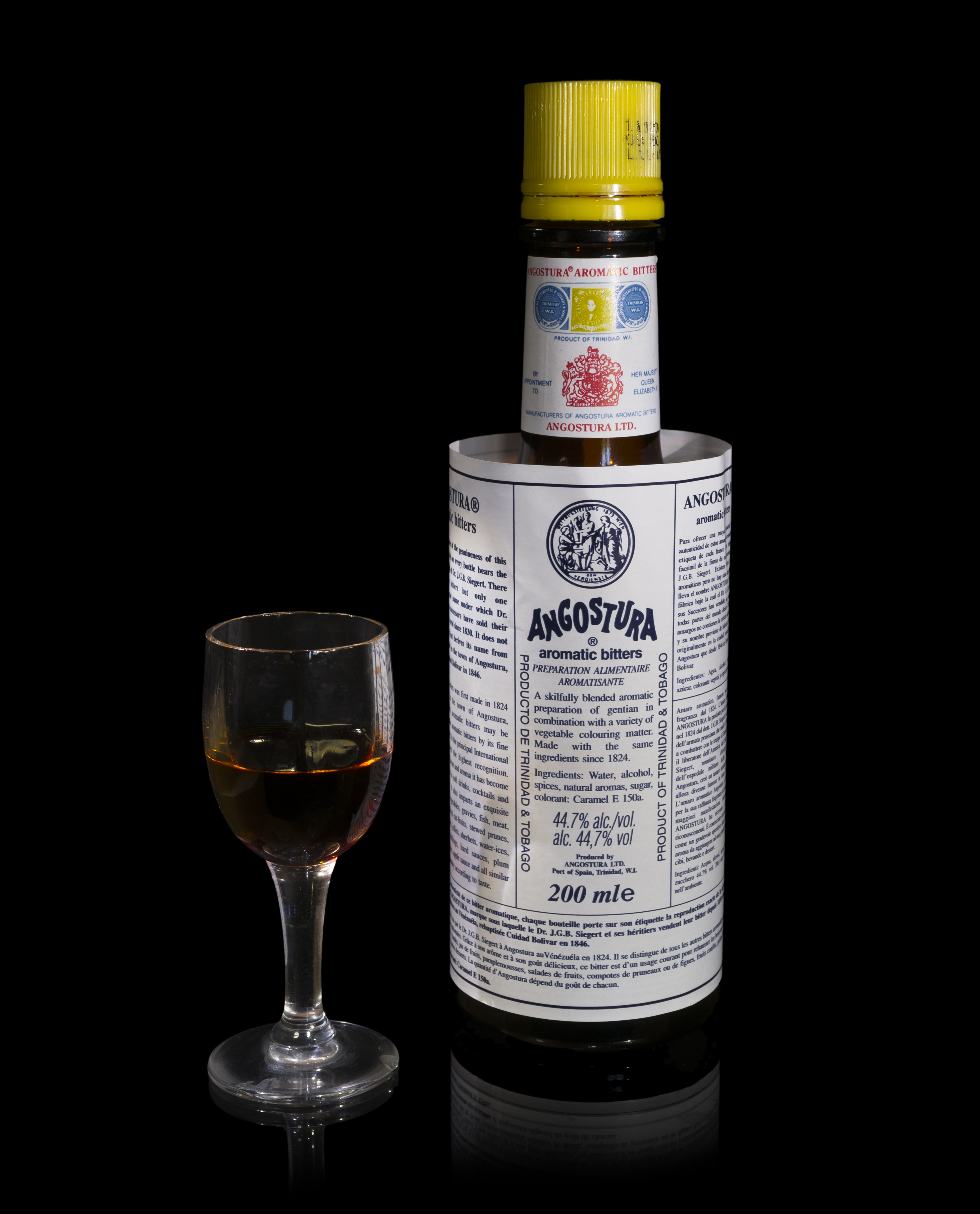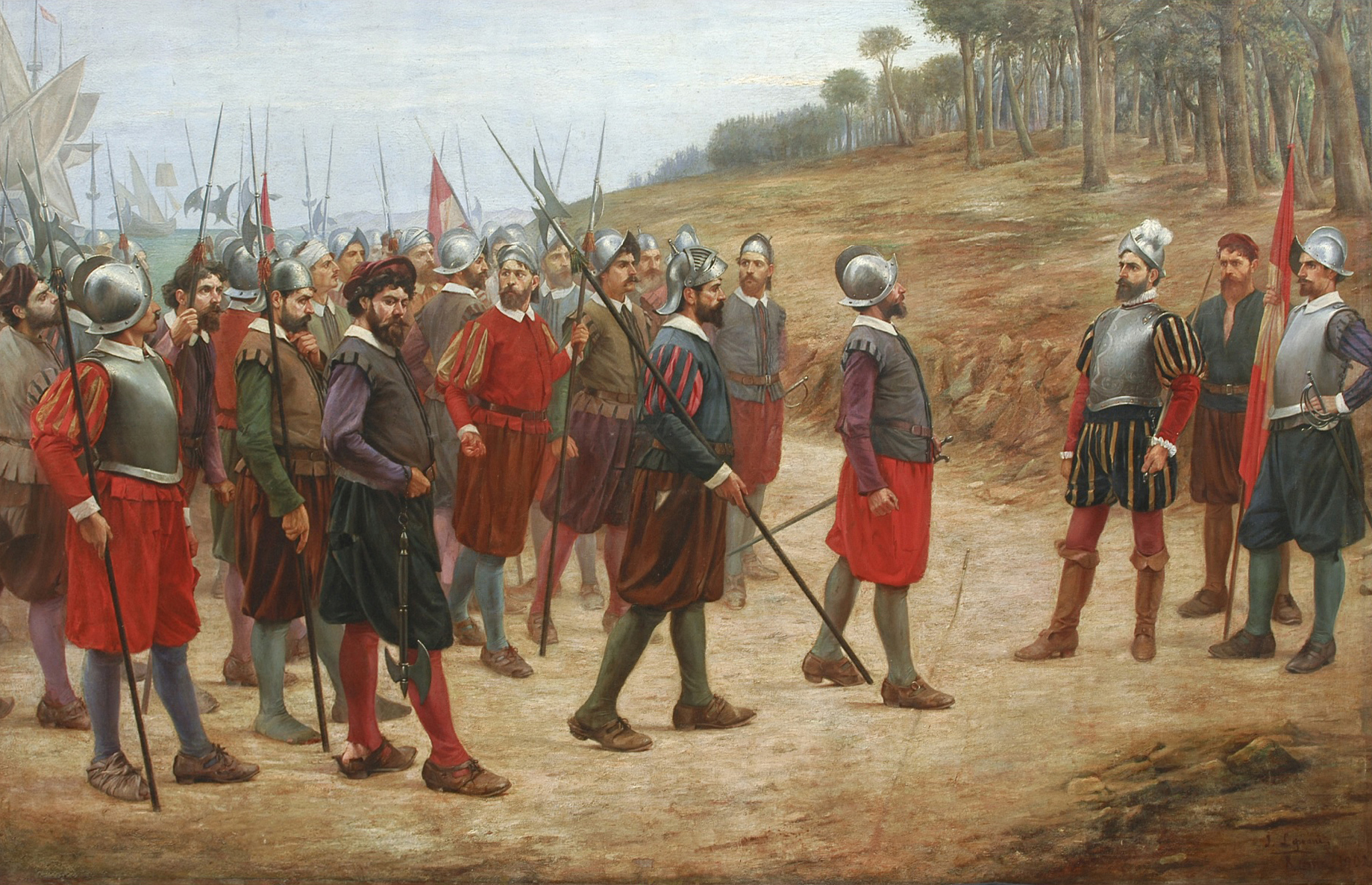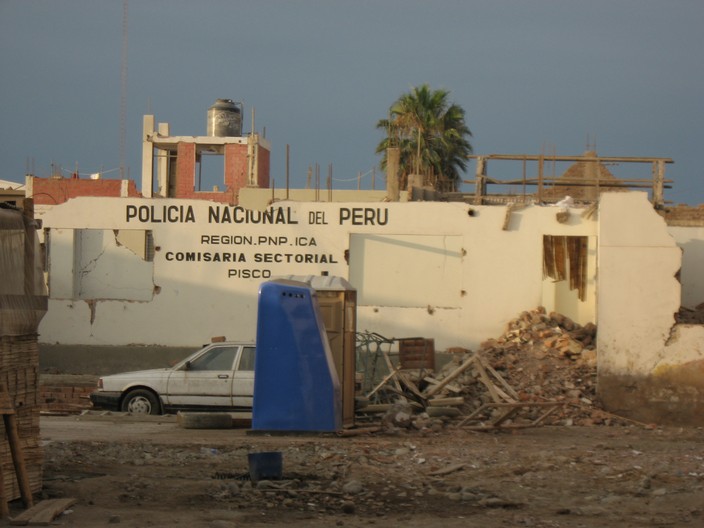|
Pisco Sour
A pisco sour is an alcoholic cocktail of Peruvian origin that is typical of Peruvian cuisine. The drink's name comes from ''pisco'', which is its base liquor, and the cocktail term ''sour'', about sour citrus juice and sweetener components. The Peruvian pisco sour uses Peruvian ''pisco'' as the base liquor and adds freshly squeezed lemon juice, simple syrup, ice, egg white, and Angostura bitters. The Chilean version is similar, but uses Chilean ''pisco'' and Pica lime, and excludes the bitters and egg white. Other variants of the cocktail include those created with fruits like pineapple or plants such as coca leaves. Although the preparation of pisco-based mixed beverages possibly dates back to the 1700s, historians and drink experts agree that the cocktail as it is known today was invented in the early 1920s in Lima, the capital of Peru, by the American bartender Victor Vaughen Morris. Morris left the United States in 1903 to work in Cerro de Pasco, a city in central Peru. In ... [...More Info...] [...Related Items...] OR: [Wikipedia] [Google] [Baidu] |
Angostura Bitters
Angostura bitters () is a concentrated bitters (herbal alcoholic preparation) based on gentian, herbs, and spices, by House of Angostura in Trinidad and Tobago. It is typically used for flavouring beverages or, less often, food. The bitters were first produced in the town of Angostura (now Ciudad Bolívar, Venezuela), hence the name, but do not contain angostura bark. The bottle is recognisable by its distinctive oversized label. ''Angostura'' is Spanish for 'narrowing', the town of Angostura having been at the first narrowing of the Orinoco River. Beverages named "Angostura Bitter" or "Angobitter" are also offered from other brands (e.g., Riemerschmid, Hemmeter). Unlike the House of Angostura product, they contain angostura bark, possibly to justify the use of the word "Angostura" in their names. History The recipe was developed as a tonic by , a German surgeon general in Simón Bolívar's army in Venezuela. Siegert began to sell it in 1824 and established a distillery for t ... [...More Info...] [...Related Items...] OR: [Wikipedia] [Google] [Baidu] |
South American Cuisine
South American cuisine has many influences, due to the ethnic fusion of South America. The most characteristic are Native American, African, Spanish, Italian, Portuguese, and Indian- South Asian. However, there is a mix of European, North American, and indigenous cuisines. The customs and food products greatly vary according to the physically distinct regions. Overview The Amazon basin of South America provides a plethora of fresh fish and tropical fruits. The Pacific Ocean provides a large amount of seafood, such as king crab (typically caught at the southern end of the continent), lobster (found in great quantities from the Juan Fernández Islands), and Antarctic krill, which was recently discovered. Tuna and tropical fish are caught all around the continent but are notably found in abundance near Easter Island. The many plains on this continent make it rich for growing foods like cereals, potatoes and quinoa. In the Patagonia region in the south of Argentina, many ... [...More Info...] [...Related Items...] OR: [Wikipedia] [Google] [Baidu] |
Spanish Conquest Of The Inca Empire
The Spanish conquest of the Inca Empire, also known as the Conquest of Peru, was one of the most important campaigns in the Spanish colonization of the Americas. After years of preliminary exploration and military skirmishes, 168 Spanish soldiers under conquistador Francisco Pizarro, his brothers, and their indigenous allies captured the Sapa Inca Atahualpa in the 1532 Battle of Cajamarca. It was the first step in a long campaign that took decades of fighting but ended in Spanish victory in 1572 and colonization of the region as the Viceroyalty of Peru. The conquest of the Inca Empire (called "Tahuantinsuyu" or "Tawantinsuyu" in Quechua, meaning "Realm of the Four Parts"), led to spin-off campaigns into present-day Chile and Colombia, as well as expeditions to the Amazon Basin and surrounding rainforest. When the Spanish arrived at the borders of the Inca Empire in 1528, it spanned a considerable area and was by far the largest of the four grand pre-Columbian civilizations. ... [...More Info...] [...Related Items...] OR: [Wikipedia] [Google] [Baidu] |
Vitis
''Vitis'' (grapevine) is a genus of 79 accepted species of vining plants in the flowering plant family Vitaceae. The genus is made up of species predominantly from the Northern Hemisphere. It is economically important as the source of grapes, both for direct consumption of the fruit and for fermentation to produce wine. The study and cultivation of grapevines is called viticulture. Most cultivated ''Vitis'' varieties are wind-pollinated with hermaphroditic flowers containing both male and female reproductive structures, while wild species are dieceous. These flowers are grouped in bunches called inflorescences. In many species, such as ''Vitis vinifera'', each successfully pollinated flower becomes a grape berry with the inflorescence turning into a cluster of grapes. While the flowers of the grapevines are usually very small, the berries are often large and brightly colored with sweet flavors that attract birds and other animals to disperse the seeds contained within the berrie ... [...More Info...] [...Related Items...] OR: [Wikipedia] [Google] [Baidu] |
Plaza Acho
A town square (or square, plaza, public square, city square, urban square, or ''piazza'') is an open public space, commonly found in the heart of a traditional town but not necessarily a true geometric square, used for community gatherings. Related concepts are the civic center, the market square and the village green. Most squares are hardscapes suitable for open markets, concerts, political rallies, and other events that require firm ground. Being centrally located, town squares are usually surrounded by small shops such as bakeries, meat markets, cheese stores, and clothing stores. At their center is often a well, monument, statue or other feature. Those with fountains are sometimes called fountain squares. By country Australia The city centre of Adelaide and the adjacent suburb of North Adelaide, in South Australia, were planned by Colonel William Light in 1837. The city streets were laid out in a grid plan, with the city centre including a central public square, Victo ... [...More Info...] [...Related Items...] OR: [Wikipedia] [Google] [Baidu] |
Ica, Peru
Ica () (Quechua: ''Ika'') is a city and the capital of the Department of Ica in southern Peru. While the area was long inhabited by varying cultures of indigenous peoples, the Spanish ''conquistador'' Jerónimo Luis de Cabrera claimed its founding in 1563. As of the 2017 census, it had a population of over 282,407. The city suffered extensive damage and loss of life during the 2007 Peru earthquake. Location The city is located on the Ica River about to the south of Lima, along the desert coast of southern Peru. Further south along the Pan-American Highway lies the city of Nazca. History In 2007, researchers found the fossil remains of a prehistoric penguin, ''Icadyptes salasi'', which inhabited the Atacama Desert about 30 million years ago. Scientists estimate it was about tall, with a beak. Evidence of prehistoric indigenous civilizations has been found in the nearby deserts, such as that of Paracas. Other cultures include the Chincha and the Inca, the latter of ... [...More Info...] [...Related Items...] OR: [Wikipedia] [Google] [Baidu] |
Andes
The Andes, Andes Mountains or Andean Mountains (; ) are the longest continental mountain range in the world, forming a continuous highland along the western edge of South America. The range is long, wide (widest between 18°S – 20°S latitude), and has an average height of about . The Andes extend from north to south through seven South American countries: Venezuela, Colombia, Ecuador, Peru, Bolivia, Chile, and Argentina. Along their length, the Andes are split into several ranges, separated by intermediate depressions. The Andes are the location of several high plateaus—some of which host major cities such as Quito, Bogotá, Cali, Arequipa, Medellín, Bucaramanga, Sucre, Mérida, El Alto and La Paz. The Altiplano plateau is the world's second-highest after the Tibetan plateau. These ranges are in turn grouped into three major divisions based on climate: the Tropical Andes, the Dry Andes, and the Wet Andes. The Andes Mountains are the highest m ... [...More Info...] [...Related Items...] OR: [Wikipedia] [Google] [Baidu] |
Viceroyalty Of Peru
The Viceroyalty of Peru ( es, Virreinato del Perú, links=no) was a Spanish imperial provincial administrative district, created in 1542, that originally contained modern-day Peru and most of the Spanish Empire in South America, governed from the capital of Lima. The Viceroyalty of Peru was officially called the Kingdom of Peru. Peru was one of the two Spanish Viceroyalties in the Americas from the sixteenth to the eighteenth centuries. The Spanish did not resist the Portuguese expansion of Brazil across the meridian established by the Treaty of Tordesillas. The treaty was rendered meaningless between 1580 and 1640 while Spain controlled Portugal. The creation during the 18th century of Viceroyalties of New Granada and Río de la Plata (at the expense of Peru's territory) reduced the importance of Lima and shifted the lucrative Andean trade to Buenos Aires, while the fall of the mining and textile production accelerated the progressive decay of the Viceroyalty of Peru. Even ... [...More Info...] [...Related Items...] OR: [Wikipedia] [Google] [Baidu] |
Pisco, Peru
Pisco ( qu, Pisqu) is a city located in the Department of Ica of Peru, the capital of the Pisco Province. The city is around 9 metres (28 feet) above sea level. Pisco was founded in 1640, close to the indigenous emplacement of the same name. Pisco originally prospered because of its nearby vineyards and became noted for its grape brandy or pisco which was exported from its port. Pisco has an estimated population of 104,656 (est. 2015). History The city was highly populated until 1685, when it was pillaged by English pirates. The city suffered again in 1687 because of an earthquake. Vines are abundant, despite the sandy and infertile terrain; they grow in many places because of the moisture from inside the earth and provide Lima with its wines and grape concentrates that run along the various mountain provinces extending to Panama and Guayaquil. Pisco was attacked by the pirates Clerck and David; in addition, in 1687 it was destroyed by an earthquake, which caused a tsunami to ... [...More Info...] [...Related Items...] OR: [Wikipedia] [Google] [Baidu] |
Distilled Beverage
Liquor (or a spirit) is an alcoholic drink produced by distillation of grains, fruits, vegetables, or sugar, that have already gone through alcoholic fermentation. Other terms for liquor include: spirit drink, distilled beverage or hard liquor. The distillation process concentrates the liquid to increase its alcohol by volume. As liquors contain significantly more alcohol (drug), alcohol (ethanol) than other alcoholic drinks, they are considered 'harder'; in North America, the term ''hard liquor'' is sometimes used to distinguish distilled alcoholic drinks from non-distilled ones, whereas the term ''spirits'' is more common in the UK. Some examples of liquors include vodka, rum, gin, and tequila. Liquors are often aged in barrels, such as for the production of brandy and whiskey, or are infused with flavorings to form a flavored liquor such as absinthe. While the word ''liquor'' ordinarily refers to distilled alcoholic spirits rather than beverages produced by fermentation ... [...More Info...] [...Related Items...] OR: [Wikipedia] [Google] [Baidu] |
Public Holiday
A public holiday, national holiday, or legal holiday is a holiday generally established by law and is usually a non-working day during the year. Sovereign nations and territories observe holidays based on events of significance to their history, such as the National Day. For example, Australians celebrate Australia Day. They vary by country and may vary by year. With Public holidays in Nepal, 36 days a year, Nepal is the country with the highest number of public holidays but it observes six working days a week. India ranks second with 21 national holidays, followed by Colombia and the Philippines at 18 each. Likewise, China and Hong Kong enjoy 17 public breaks a year. Some countries (e.g. Cambodia) with a longer, six-day workweek, have more holidays (28) to compensate. The public holidays are generally days of celebration, like the anniversary of a significant historical event, or can be a religious holiday, religious celebration like Diwali. Holidays can land on a specific day ... [...More Info...] [...Related Items...] OR: [Wikipedia] [Google] [Baidu] |
Latin America
Latin America or * french: Amérique Latine, link=no * ht, Amerik Latin, link=no * pt, América Latina, link=no, name=a, sometimes referred to as LatAm is a large cultural region in the Americas where Romance languages — languages derived from Latin — are predominantly spoken. The term was coined in the nineteenth century, to refer to regions in the Americas that were ruled by the Spanish, Portuguese and French empires. The term does not have a precise definition, but it is "commonly used to describe South America, Central America, Mexico, and the islands of the Caribbean." In a narrow sense, it refers to Spanish America plus Brazil (Portuguese America). The term "Latin America" is broader than categories such as ''Hispanic America'', which specifically refers to Spanish-speaking countries; and ''Ibero-America'', which specifically refers to both Spanish and Portuguese-speaking countries while leaving French and British excolonies aside. The term ''Latin America'' was f ... [...More Info...] [...Related Items...] OR: [Wikipedia] [Google] [Baidu] |







.jpg)

